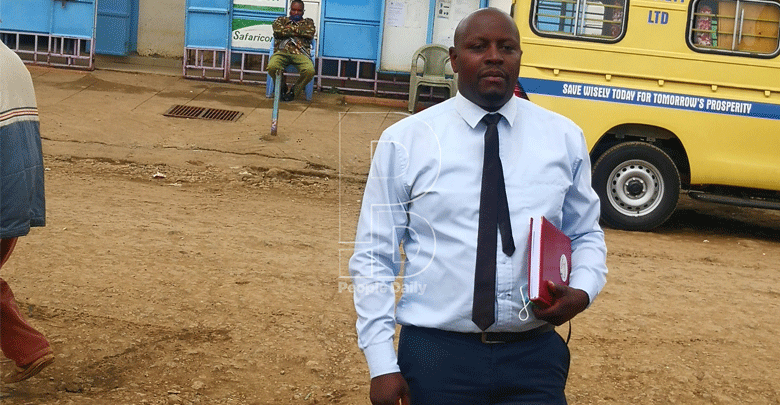Simple research on loan uptake a wealth minter

When Prof Michael Kremer and his colleague Dr Alfred Luoba, first introduced water tank loans through Nyala Multipurpose Society in Nyandarua and Laikipia counties, they had only one goal in mind – to study the impact of guarantors on loan uptake.
However, there was one problem; at the inception of the research project in 2007, there was no demand for water tank loans among the society’s members, since the idea was new to them.
To create demand, the two economists came up with a raffle – basically a random sampling method – through which “lucky winners” were contacted and asked if they would be interested in concessionary water tank loans.
At the time, the society had 7,000 members. Of these, 2,000 were dairy farmers.
The academicians decided to base their study on the dairy farmers, in part because this group needed water most for their livestock compared to their counterparts who were crop farmers.
Again, they generated monthly incomes from the sale of milk to the society, meaning that they had the ability to repay the loans. The role of the sacco was to mitigate the risk of default.
Simply suspicious
“Some said ‘no’,” recalls Paul Nuthu, now Chief Executive Officer of the sacco that was registered by the Ministry of Co-operatives in 2010.
Those who declined did not know about the raffle or the study that informed it. Others were simply suspicious, wondering what magic had been used to select them. Some thought the deal was too good to be true.
At first, only the courageous few were willing to take the risk, and that was because the loan terms were very friendly.
Repayments were to be made from milk proceeds through a check-off system.
Kremer and Luoba then approached Kentank, a plastic tanks manufacturer, and entered into an agreement to supply 5,000-litre tanks to every farmer who signed up.
When the two concluded their research in 2013, they went their way to study the data they had collected.
The programme would have ended there but the leadership of Nyala Society decided to power ahead, with the loan plan and extend it to all its members.
Although they maintained the terms of the loans, they modified the programme in three ways.
First, they started by training members on the benefits of the loan and how the system worked.
Then they asked the farmers to form groups – say of seven members each – and all members were to act as each other’s guarantor.
Then they reduced the guarantor models from the four that the economists had designed, to one that was easy to implement.
Big impact
One of the things they did not change – and which had a big impact on the subsequent success of that programme – was that the water tank itself was to be used as security or collateral.
That meant Nyala would repossess the tank in case a member defaulted on repayments.
Lastly, the society started collecting repayments from the farmers’ milk payments, thus ending the initial check-off system that required a third party.
“You can imagine the impact on a village when the trucks started delivering the tanks to members who had applied for the loans,” said Nuthu in a recent interview at the society’s headquarters in Ndaragwa.
Within a short time, uptake of the water tank loans started growing. In 2018, for instance, the society sold 800 tanks, 100 more than the previous year. This increased to 1,200 in 2019 and to 1,400 a year later.
With time, the financial transactions between the society and individual farmers became too complex. First the society had to pay the farmers in cash for their deliveries.
That meant carrying huge volumes of cash to the villages. Then the farmers would pay for their tanks – again in cash.
This posed a security risk for both farmers and society employees who moved from village to village carrying large bundles of bank notes.
The best way to reduce the risk was by opening a sacco to process the payments.
That was how Nyala Vision Sacco was founded as an offshoot of the society and as a way of handling large volumes of cash.
Today, the sacco has over 23,000 members, who in 2020 paid Sh8.3 million in tank loan interest from revenues of Sh46 million, up from Sh2.2 million in loan interest in 2017.
When the sacco management noted how successful the water tank loans had become, they decided to offer similar chaff cutter loans.
Increase in production
This made life easier for farmers. With readily available water, their cows had enough to drink.
Surplus water could be used to grow fodder. Naturally, this led to an increase in milk production among tank owning farmers. It also stabilised milk supply throughout the year.
Before the tanks were introduced, milk supply would fluctuate drastically, going up during the rainy season when there was plenty of water, and declining sharply between January and June when rainfall was scarce.
Today, on average, the farmers produce about 78,000 litres of milk a day. Production seldom goes below 50,000 even when the region is experiencing drought.
“We have now introduced iron sheets, solar power, gas cooker and TV loans based on the water tank model,” said Abraham Mwaniki, now Nyala’s project lead for these loan initiatives.
The aim, Nuthu said, is to ensure that farmers have more assets, not just cash. However, the bigger effect has been that a simple innovation – which started as a research on loan uptake – is having a major impact in Laikipia and Nyandarua, raising incomes of farmers and ensuring that milk and yoghurt consumers in the region have enough supplies.








